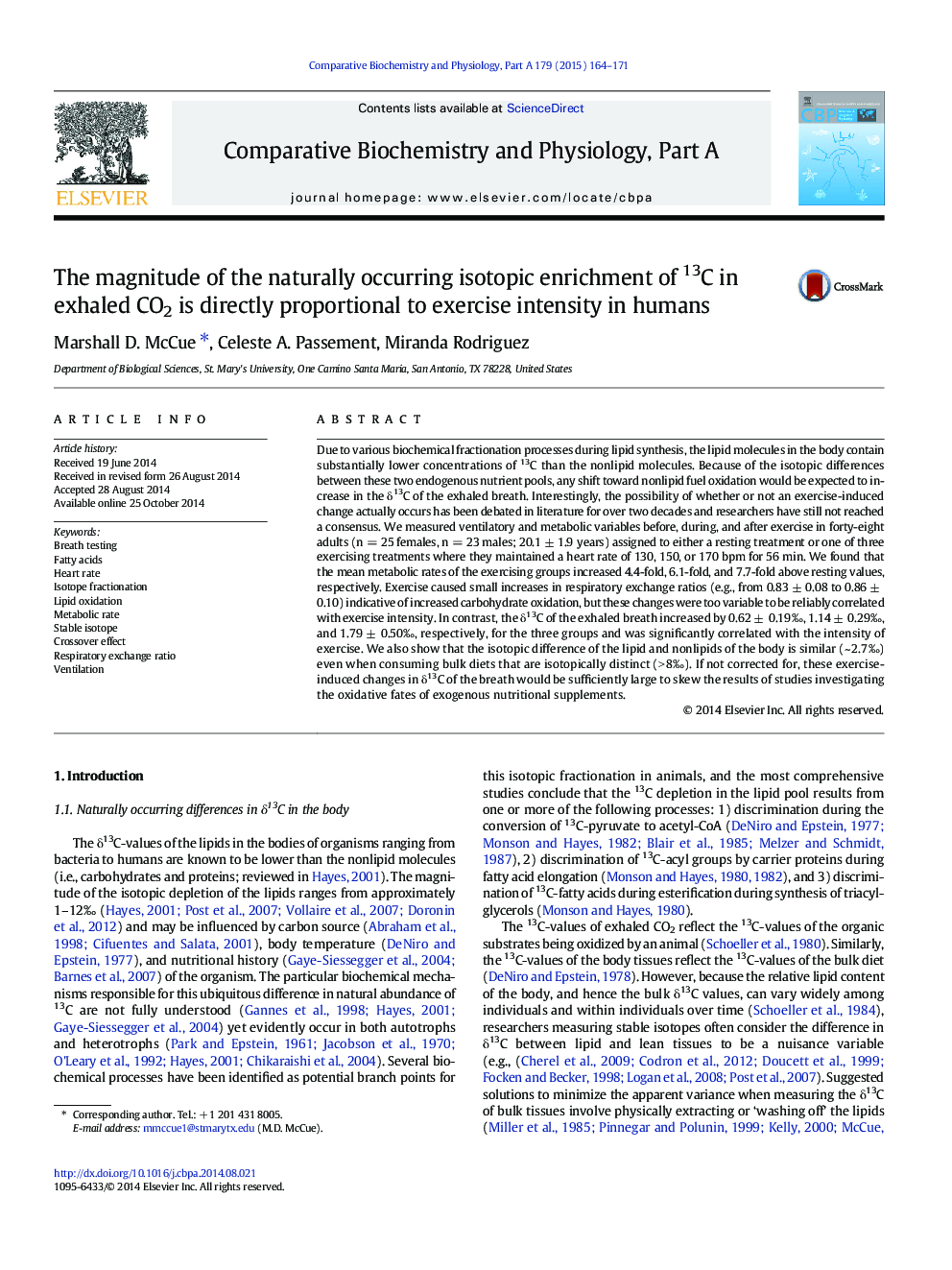| Article ID | Journal | Published Year | Pages | File Type |
|---|---|---|---|---|
| 1972140 | Comparative Biochemistry and Physiology Part A: Molecular & Integrative Physiology | 2015 | 8 Pages |
Due to various biochemical fractionation processes during lipid synthesis, the lipid molecules in the body contain substantially lower concentrations of 13C than the nonlipid molecules. Because of the isotopic differences between these two endogenous nutrient pools, any shift toward nonlipid fuel oxidation would be expected to increase in the δ13C of the exhaled breath. Interestingly, the possibility of whether or not an exercise-induced change actually occurs has been debated in literature for over two decades and researchers have still not reached a consensus. We measured ventilatory and metabolic variables before, during, and after exercise in forty-eight adults (n = 25 females, n = 23 males; 20.1 ± 1.9 years) assigned to either a resting treatment or one of three exercising treatments where they maintained a heart rate of 130, 150, or 170 bpm for 56 min. We found that the mean metabolic rates of the exercising groups increased 4.4-fold, 6.1-fold, and 7.7-fold above resting values, respectively. Exercise caused small increases in respiratory exchange ratios (e.g., from 0.83 ± 0.08 to 0.86 ± 0.10) indicative of increased carbohydrate oxidation, but these changes were too variable to be reliably correlated with exercise intensity. In contrast, the δ13C of the exhaled breath increased by 0.62 ± 0.19‰, 1.14 ± 0.29‰, and 1.79 ± 0.50‰, respectively, for the three groups and was significantly correlated with the intensity of exercise. We also show that the isotopic difference of the lipid and nonlipids of the body is similar (~ 2.7‰) even when consuming bulk diets that are isotopically distinct (> 8‰). If not corrected for, these exercise-induced changes in δ13C of the breath would be sufficiently large to skew the results of studies investigating the oxidative fates of exogenous nutritional supplements.
